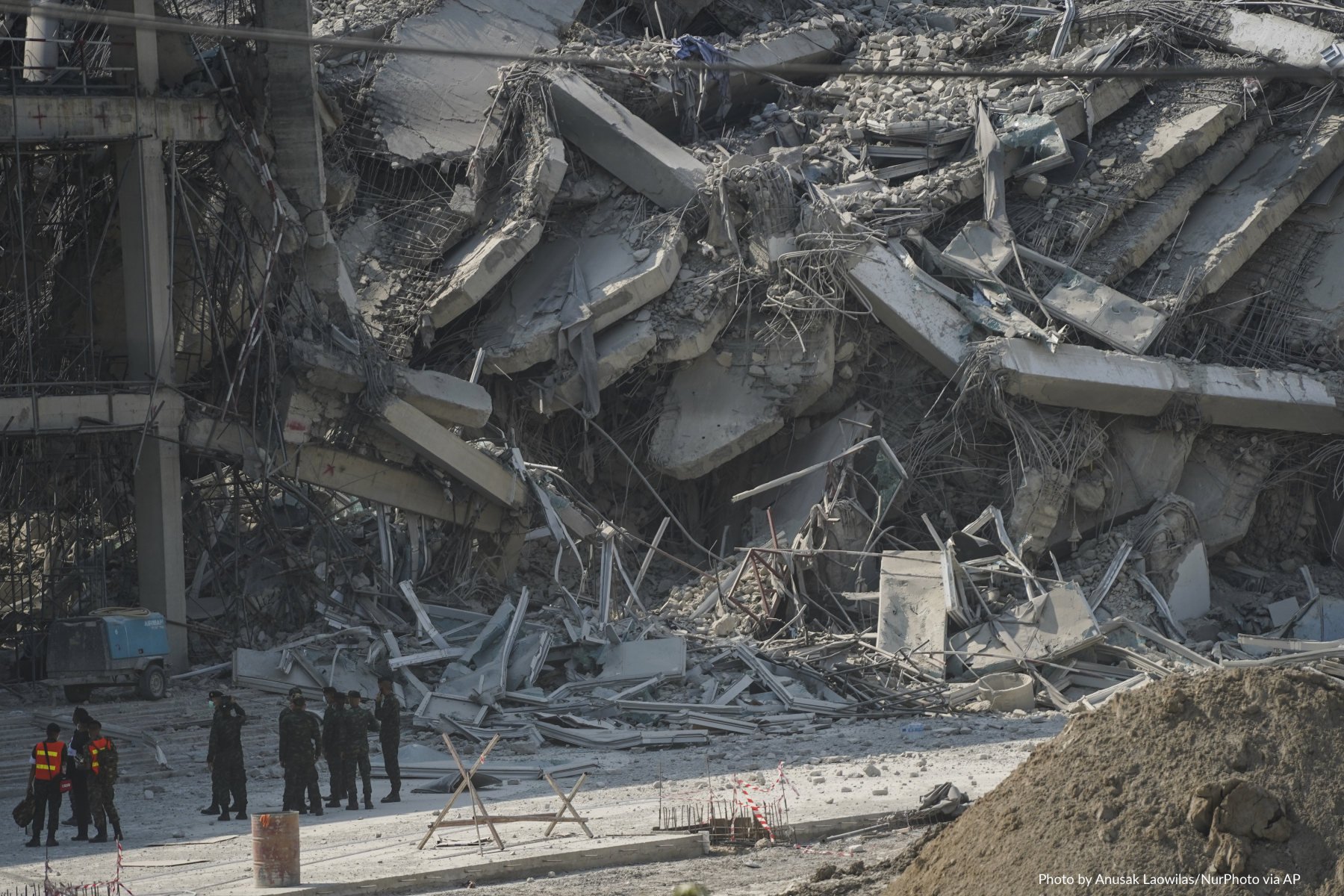Following the devastating earthquakes in Myanmar and Thailand, which have left thousands dead and displaced millions, international aid has fallen short—especially as U.S. funding cuts hinder relief efforts. In response, CWS is working with local partners to provide emergency assistance, ensuring that affected communities receive critical aid despite global funding shortfalls.
The Urgent Need for Humanitarian Aid in Myanmar
On Friday, March 28, a powerful 7.7-magnitude earthquake struck Myanmar and neighboring Thailand, followed minutes later by a 6.4-magnitude aftershock. On the same day, thousands of employees of the U.S. Agency for International Development—responsible for administering civilian foreign aid and development assistance—received notice that their roles were being eliminated.
In the days following the earthquakes, which have since caused more than 2,500 deaths and 5,000 injuries, rescue teams from India, China, Russia, Thailand, Malaysia and other countries have already arrived in Myanmar.
The Trump administration has promised to provide $2 million in aid—a figure dwarfed by commitments made from other foreign governments— through local humanitarian assistance organizations and deploy an emergency response team. This response will be more difficult than ever as the United States has severed valuable ties with local organizations and fired USAID staff who could have restored these critical relationships.
Myanmar, one of the world’s poorest countries, has been embroiled in years of civil war and was the biggest recipient of U.S. aid in the region last year. As many as 20 million people in the country needed humanitarian assistance before the earthquakes, and millions more have now been displaced and will need food and clean water.
Despite promises of aid, the U.S. team has yet to arrive, and the crucial 72-hour window after a quake, when rescuers are most likely to find survivors trapped in the rubble, has already passed.
The lack of foreign aid will have a critical impact for millions of people who call Myanmar home. With limited global engagement, the support provided by CWS and other organizations is more important than ever.
How CWS is Responding
In our initial response, CWS has provided financial support to a local partner to reach communities close to the epicenter outside of Junta-controlled areas where little or no help has been provided. Through the Asian Disaster Reduction & Response Network (ADRRN), CWS Japan is coordinating with local disaster organizations in the region to assess the situation and determine how and where CWS can provide the greatest support.
In the most affected areas, including Mandalay City, Sagaing Province and Nay Pyi Taw, critical items have been distributed, including food, hygiene items, cash assistance, and emergency shelter and hygiene kits.
CWS will continue to work with partners in the region to provide initial life-saving support and work with affected communities long after the initial disaster response phase to identify unmet needs and gaps where our support and efforts are most impactful. We will be involved in long-term recovery efforts to help meet these needs in the months and years to come.
How You Can Help
Despite widespread damage caused by both earthquakes, funding from the international community is far below what is needed. The Trump administration’s decision to cut funding to the U.S. Agency for International Development has left millions of people already in need of humanitarian support even more vulnerable.
Please consider making a donation to support our response and help us fill the gaps left by global funding shortfalls. Your contributions ensure that we can provide critical and life-saving resources to our neighbors when it’s most needed and sustain that support long after the news has left the headlines.
To learn more about how CWS will respond to the Myanmar Earthquake, read our situation report. To support CWS’s response to emergencies like these, click here.




